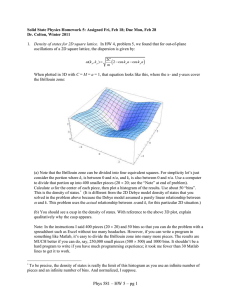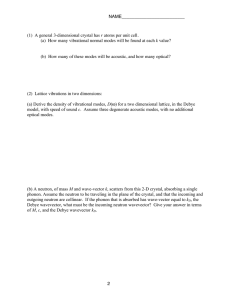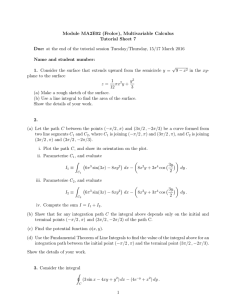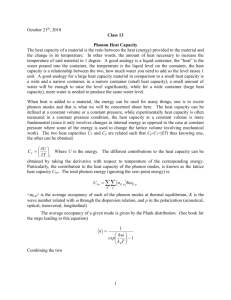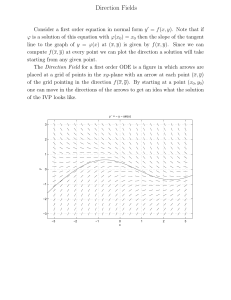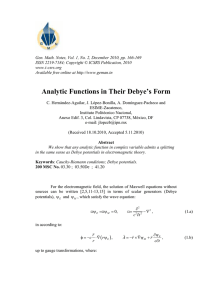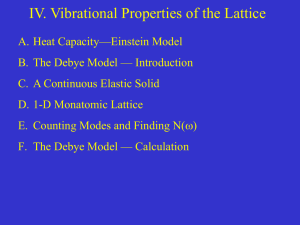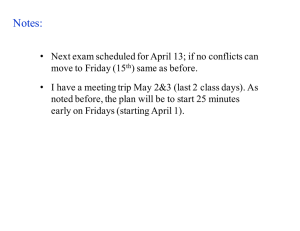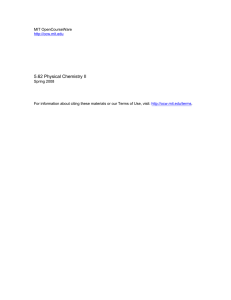PHY4604–Introduction to Quantum Mechanics Fall 2004 Problem Set 1 August 25, 2004
advertisement
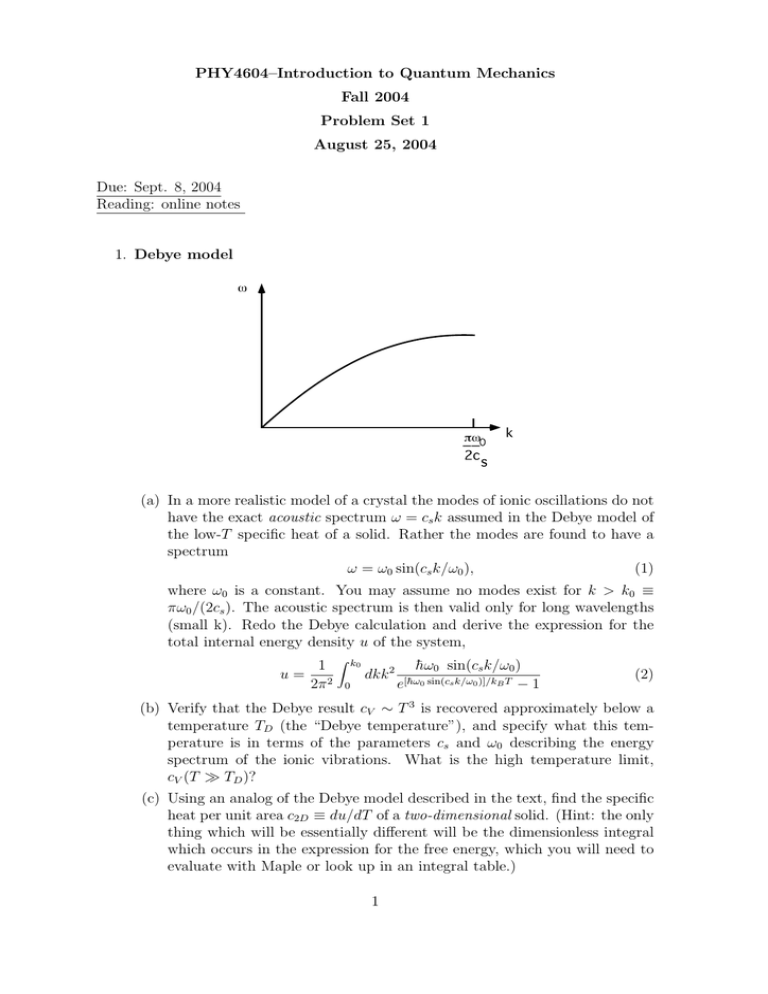
PHY4604–Introduction to Quantum Mechanics Fall 2004 Problem Set 1 August 25, 2004 Due: Sept. 8, 2004 Reading: online notes 1. Debye model (a) In a more realistic model of a crystal the modes of ionic oscillations do not have the exact acoustic spectrum ω = cs k assumed in the Debye model of the low-T specific heat of a solid. Rather the modes are found to have a spectrum ω = ω0 sin(cs k/ω0 ), (1) where ω0 is a constant. You may assume no modes exist for k > k0 ≡ πω0 /(2cs ). The acoustic spectrum is then valid only for long wavelengths (small k). Redo the Debye calculation and derive the expression for the total internal energy density u of the system, u= 1 Z k0 h̄ω0 sin(cs k/ω0 ) 2 dkk 2π 2 0 e[h̄ω0 sin(cs k/ω0 )]/kB T − 1 (2) (b) Verify that the Debye result cV ∼ T 3 is recovered approximately below a temperature TD (the “Debye temperature”), and specify what this temperature is in terms of the parameters cs and ω0 describing the energy spectrum of the ionic vibrations. What is the high temperature limit, cV (T À TD )? (c) Using an analog of the Debye model described in the text, find the specific heat per unit area c2D ≡ du/dT of a two-dimensional solid. (Hint: the only thing which will be essentially different will be the dimensionless integral which occurs in the expression for the free energy, which you will need to evaluate with Maple or look up in an integral table.) 1 (d) In the standard derivation of the Debye specific heat, it is assumed the sum over modes may be replaced by an integral. Make an order of magnitude estimate for the size of a cube of material at room temperature below which this approximation is no longer valid, i.e. the discreteness of the energy spectrum should become important. Assume the velocity of sound is size-independent, cs = 1 × 105 m/s. 2. Maple problems. Late penalties waived for these problems. Please turn in Maple worksheet, i.e. both code and results. (a) Plot sin(x)/x from 0 to 1 . Label axes. (b) Plot sin(xy) over (0..1),(0..1). Label axes. (c) Find the roots of x3 − 13x + 12. (d) Find a root of ecos x = log(2 + sin x) in the range (0..2). (e) Differentiate the function cos(log x). (f) Integrate 1/(x2 + a2 )3/2 i. indefinite integral ii. from 0. to 1. (g) Plot the result from part 1a) above as a function of T /TD . 2
